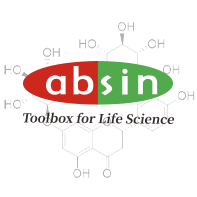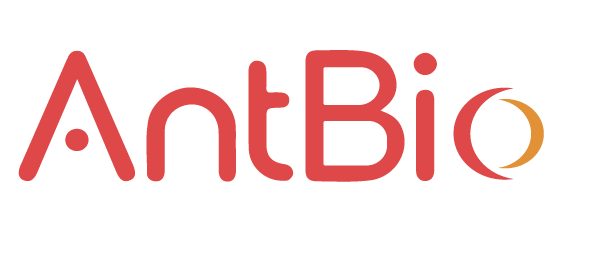Product Details
Product Details
Product Specification
| Operating Instructions | Serum (plasma), animal and plant tissues, cells, cell supernatant | |||||||||||||||||||||||||||||||||||||||||||||||||||||||||||||||||||||||||||||||||||||||||||
| Usage |
Self-supplied consumables:
Sample preparation: 1, animal tissues: say 0.1 g sample, add 1 mL Extraction Buffer, ice bath homogenate, 10000 g, 4 ℃ centrifuge for 10 min, take the supernatant, the ice under test. 2. Plant tissue: Said to take about 0.1 g sample, add 1 mL Extraction Buffer dolly, ice bath ultrasonic broken 5 min (20% or 200 W, ultrasound 3 s, 7 s interval, repeat 30 times), 10000 g, 4 ℃ centrifuge for 10 min, take the supernatant, ice under test. 3. Cells: Collect 5 million cells to the centrifugal tube, with cold PBS cleaning cells, abandoned after centrifugal supernatant, add 1 mL Extraction Buffer, ice bath ultrasonic broken cell 5 min (20% or 200 W, ultrasound 3 s, 7 s interval, repeat 30 times), then 10000 g, 4 ℃ centrifuge for 10 min, take on clear liquid, the ice under test. 4, serum (plasma), such as cell supernatant liquid samples: direct measurement. Note: if you need to determine protein concentration, it is recommended to use the article number: protein quantitative abs9232 kit (BCA) to determine the protein concentration in the sample. Experimental procedures: 1. The microplate reader or visible spectrophotometer was preheated for more than 30 min, and the wavelength was adjusted to 540 nm. The visible spectrophotometer was zeroed with deionized water. 2. Operation table:
Note: Each sample needs to set a control hole to exclude the influence of NO2- present in the sample itself, so 96 T can only test 48 samples. It is recommended before the experiment to select 2-3 samples with large expected differences for pre-experiment. If ΔA was less than 0.005, the sample size could be increased appropriately. If Δ A greater than 1.0, the samples available Extraction Buffer further dilution, the calculation results multiplied by the dilution ratio, or reduce the Extraction with sample size. |
|||||||||||||||||||||||||||||||||||||||||||||||||||||||||||||||||||||||||||||||||||||||||||
| Theory | Superoxide anion (OFR) and other reactive oxygen species (ROS) play important roles in immunity and signal transduction. However, excessive accumulation of ROS can damage cell membranes and biological macromolecules, leading to metabolic abnormalities in cells and tissues, and thus cause a variety of diseases. Superoxide anion in plant, animal tissue, serum and other samples reacts with hydroxylamine hydrochloride to form NO2-, NO2- reacts with Griess reagent, the mechanism of Griess analysis is summarized as azo coupling between diazogens, diazogens are produced by sulfonamide and NO2- and N-(1-naphthyl) ethylenediamine dihydrochloride, resulting in red azo compounds. There is a characteristic absorption peak at 540 nm, and the O2- content in the sample can be calculated according to the A540 value. Samples such as animal and plant tissues, serum and cells can be detected. | |||||||||||||||||||||||||||||||||||||||||||||||||||||||||||||||||||||||||||||||||||||||||||
| Synonym | Micro Superoxide Anion Assay Kit | |||||||||||||||||||||||||||||||||||||||||||||||||||||||||||||||||||||||||||||||||||||||||||
| Composition |
|
|||||||||||||||||||||||||||||||||||||||||||||||||||||||||||||||||||||||||||||||||||||||||||
| Background | Reactive oxygen species (ROS), such as superoxide anion, play important roles in immunity and signal transduction in organisms. However, excessive accumulation of ROS can damage cell membranes and biological macromolecules, leading to metabolic abnormalities in cells and tissues, which can cause a variety of diseases. | |||||||||||||||||||||||||||||||||||||||||||||||||||||||||||||||||||||||||||||||||||||||||||
| General Notes | 1. Do not mix the components between different batch numbers and different manufacturers. 2, when mixing or redissolving the components, avoid bubbles. 3, frequently change the suction head to avoid cross contamination between the components. 4, before the experiment, ensure that all the components and equipment are at the right temperature. 5. Own chloroform. 6, each sample needs to set a control hole to exclude the influence of NO2- existing in the sample itself, so 96T can only measure 48 samples. |
|||||||||||||||||||||||||||||||||||||||||||||||||||||||||||||||||||||||||||||||||||||||||||
| Storage Temp. | 2-8℃, stored in the dark, valid for 6 months. |
|||||||||||||||||||||||||||||||||||||||||||||||||||||||||||||||||||||||||||||||||||||||||||
| Applications | Serum (plasma), animal and plant tissues, cells, cell supernatant | |||||||||||||||||||||||||||||||||||||||||||||||||||||||||||||||||||||||||||||||||||||||||||


